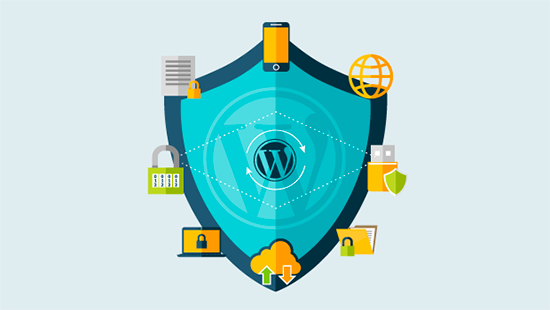Who doesn’t get attracted to bright visuals and colorful themes of a website? Well, everybody does!
The smart user-interface, flexible features, and other tools are perfect to entice a diverse crown. However, you never know who’s eyeballing your website or planning to hack it. Over 10,000 websites experience cyber-attacks daily and none of them expects to receive malicious threats. It seems pretty weird to let someone hack your data and information but with the advanced tech and techniques, you can prevent your website from getting hacked.
Here are 11 step checklist to make sure that your website is protected from any type of cyber-attack:
Page Contents
AVOID SPAM
In today’s world, it seems impossible for a user to avoid spam but there are few ways in which you can do it. And to do that you have to begin by disabling all user-generated content as this is a perfect way that guarantees to save the time and effort you’ll require to deal with the spam.
Once you get done with that, you should outsource your user-generated content management services that include, screening, storage, and publication of comments. However, third part services always require extra configuration to ensure that comments are only indexed by the major search engines. Along with that keep CAPTCHA in mind as they are not 100% protective. Most of the programmers attempt to clear CAPTCHA by investing their time and effort. Spammers can easily use multiple networks to access your website. That’s why you should block free links before a hacker could enter your system.
LOOK OUT FROM UNWANTED DENIAL OF SERVICE (DDOS)
To begin by protecting your website from Denial of Service attacks, you should understand the attacks like their nature, why it happens and any similarities. Let’s pursue a basic volumetric denial of service (DoS) attack that hacks your IP address, Web server, and even traffic.to protect your site from such a threat, you should buy more bandwidth that can make the website’s framework more strong. Before implementing, you must ensure that the data centers are connected to different networks.
Now, configure your network hardware against DDoS attacks by making simple changes like connecting it to the firewall or router to drop incoming ICMP packets. Once you get done with then, safely deploy a DDoS protection appliance, anti-DDoS hardware, and software modules to protect your DNS system.
PREVENT YOUR WEBSITES FROM FORCE ATTACKS
The brute force attacks often appear with DDoS attacks that are more focused to destroy the coding and structure of your system. They are mostly plotted to harm your website design, crack login credentials or expose encrypted data. And to prevent it from multiple brute attacks, it’s ideal to build reinforcements against DDoS and brute force attacks.
XSS CROSS-SITE SCRIPTING ARE MALICIOUS
The most common practice that is used by the hackers is opening the links regarded by XSS cross-sites. These sites not only allow the programmer to steal your admin credentials but allows them to access your system and get a hold on your personal information. This type of stealing gives a sneaky way to hackers so they can abscond one’s information. However, you can use strong shields and protective software against it.
USE SHIELD AGAINST SQL INJECTION
The SQL injection is most commonly used while designing your website and it also comes handy when hackers try to steal your sensitive data. This is because most of the web servers usually manage the database of the website by using SQL. To prevent your information from such a threat, you can simply use shields and software that’ll help you completely get rid of them.
BACKUP YOUR SITE’S DATA
With the right safety measures, it is not likely to happen that you’ll lose your data however if it comes to worse, you have to get ready and for that, the backup data would come handy.
USE ISO 27018 compliance
Now if you wonder what ISO 27018 compliance is then this tech is pretty cool and trending these days. Where everything available on cloud is prone to get hacked, ISO 27018 is a list of measures and fine protocols that ensures the tech you are using is secure to access.
INSTEAD OF HTTP, USE HTTP/2
Do you wonder why http/2 is suggested to use except for the old HTTP? Well, the majority of companies are hosting HTTP for decades that has made it easier for hackers to steal your data or access your website. Whereas the new http/2 hosting is something new allows only one user to access at a time and update the information. It also decreases the amount of time that is exchanged between the customer and the server. Along with that, it also facilitates you in the speedy transaction of data and gives an organic boost to the SEO practices by streamlining the flow of information over the SERPs.
USE SECURE PLATFORMS FOR ONLINE PAYMENTS
Avoid using local platforms for making online transactions. While you are processing credit or debit cards make sure to continue your payments via a trusted provider that assures the security of your payments. By secure payment methods, you can easily build trust between your providers and the customers.
PASSWORD PROTECTION IS IMPORTANT
To prevent your important webpages, it is necessary for you to password protect them. In this digitized era where protection of the admin credentials is not in your hands, you can use strong passwords to secure your pages, content and even CMS collections. This protection will only allow authorized members to access the webpage and make changes to company logo design, user interface, etc.
THE BOTTOM LINE
After preparing the checklist to make sure to follow it as these steps will prevent your website from malicious cyber threats. With the involvement of tech, you have to get equipped with the latest tech that can help you run smoothly without any fears of losing your data.


